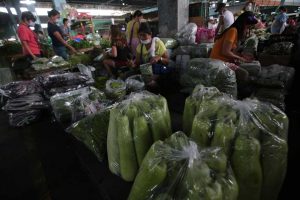WHOLESALE price growth in the Philippines and retail price growth in Metro Manila both eased in February, according to the Philippine Statistics Authority (PSA).
In preliminary data released on Monday, the PSA said the general wholesale price index (GWPI) rose 2.8% year on year in February, slowing from the 3.5% posted in January and the 6.8% in February 2023.
The February reading was the weakest rise in bulk prices in 32 months, or since the 2.2% posted in June 2021.
Year to date, wholesale price growth averaged 3.2%, easing from 6.9% in the first two months of 2023.
Slower growth in the GWPI was primarily driven by the manufactured goods classified chiefly by materials sub-index, the PSA said in a statement. The sub-index reading in February was 2.2%, slowing from 4.6% in January.
“The slowdown can be attributed to the slowdown in headline inflation experienced during these months driven by the alleviation of supply chain constraints, and more relaxed demand due to high interest rates,” John Paolo R. Rivera, Oikonomia Advisory & Research, Inc. president and chief economist, said in an e-mail.
Mr. Rivera said the slowdown in manufactured good prices was caused by weakening demand coming off the holiday season.
Luzon wholesale price growth eased to 2.6% in February from 3.4% in January and 7% in February 2023. Meanwhile, wholesale price growth in the Visayas and Mindanao came in at 6.1% and 2.4%, respectively.
In a separate statement, the PSA said the National Capital Region’s (NCR) general retail price index (GRPI) further declined to 2.1% from 6.6% a year earlier and the 2.5% reading in January.
The February outcome was the weakest in 25 months, or since the 1.9% increase in January 2022.
In the year to date, Metro Manila retail price growth averaged 2.3%, against 6.4% at the end of February 2023.
According to the PSA, the slowdown in the GRPI was mainly caused by weakness in the food index, where price growth decelerated to 3% from 3.7% in January.
Rizal Commercial Banking Corp. Chief Economist Michael L. Ricafort said in an e-mail that improved agricultural output, caused by benign weather conditions, flowed on to slower year-on-year increases in wholesale and retail prices.
“The food index has slowed down due to food supply constraints being addressed and weaker demand,” Mr. Rivera said. — Karis Kasarinlan Paolo D. Mendoza
